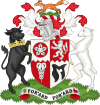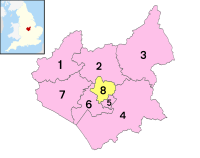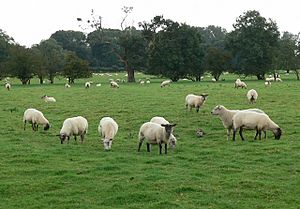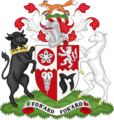Leicestershire facts for kids
Quick facts for kids
Leicestershire
|
|||||||||||||||||||||||||||||||||||||||||||||||||||||
|---|---|---|---|---|---|---|---|---|---|---|---|---|---|---|---|---|---|---|---|---|---|---|---|---|---|---|---|---|---|---|---|---|---|---|---|---|---|---|---|---|---|---|---|---|---|---|---|---|---|---|---|---|---|
|
|||||||||||||||||||||||||||||||||||||||||||||||||||||
 |
|||||||||||||||||||||||||||||||||||||||||||||||||||||
| Sovereign state | United Kingdom | ||||||||||||||||||||||||||||||||||||||||||||||||||||
| Constituent country | England | ||||||||||||||||||||||||||||||||||||||||||||||||||||
| Region | East Midlands | ||||||||||||||||||||||||||||||||||||||||||||||||||||
| Established | Historic | ||||||||||||||||||||||||||||||||||||||||||||||||||||
| Time zone | UTC±00:00 (Greenwich Mean Time) | ||||||||||||||||||||||||||||||||||||||||||||||||||||
| • Summer (DST) | UTC+01:00 (British Summer Time) | ||||||||||||||||||||||||||||||||||||||||||||||||||||
| Members of Parliament |
|
||||||||||||||||||||||||||||||||||||||||||||||||||||
|
|||||||||||||||||||||||||||||||||||||||||||||||||||||
Leicestershire (often shortened to Leics.) is a county in the East Midlands region of England. It shares borders with several other counties. These include Nottinghamshire to the north and Warwickshire to the south-west. The A5 road, also known as Watling Street, forms most of the border with Warwickshire.
The county gets its name from the city of Leicester. Leicester is in the middle of the county but is managed separately. The total population of Leicestershire, including Leicester, is over 1 million people. More than half of these people live in the Leicester Urban Area.
Contents
History of Leicestershire
Early History and Boundaries
Leicestershire was first mentioned in the Domesday Book. This was a big survey of England done in 1087. The county was divided into areas called wapentakes, which later became hundreds. The name Laegrecastrescir was first used in 1087.
The borders of Leicestershire have not changed much since the Domesday Survey. A small part of Derbyshire was swapped for an area called Netherseal. Also, as Market Harborough grew, a part of Northamptonshire called Little Bowden was added to Leicestershire.
Changes in Local Government
In 1974, a law changed how local areas were governed. Leicester city and Rutland became districts within Leicestershire. But in 1997, these changes were reversed. Rutland and Leicester city became their own separate areas. Rutland is now a distinct ceremonial county. However, the police force for Rutland is still the Leicestershire Constabulary.
The Fox Symbol
The fox is an important symbol for Leicestershire. It is used by the county council, the Leicestershire County Cricket Club, and Leicester City FC. Leicestershire is also known as the birthplace of modern fox hunting. Famous figures like Hugo Meynell from Quorn are linked to its history.
Geography of Leicestershire
Rivers and Hills
The River Soar starts in the south of Leicestershire, near Hinckley. It flows north through Leicester. The river then joins the River Trent where Leicestershire, Derbyshire, and Nottinghamshire meet.
A large part of the north-west of the county is part of the National Forest. This forest also stretches into Derbyshire and Staffordshire. The highest point in Leicestershire is Bardon Hill. It stands at 278 metres (912 feet) high. The lowest point is near Bottesford, where the River Devon leaves the county.
Population and Towns
Population Figures
In 2001, the population of Leicestershire (not including Leicester city) was about 609,578 people. The county covers an area of 2,084 square kilometres (804 sq mi). The largest population centre is the city of Leicester. After Leicester, the next largest town is Loughborough.
Major Towns and Villages
Other large towns in Leicestershire include Ashby-de-la-Zouch, Coalville, and Hinckley. You can also find Market Harborough, Melton Mowbray, Oadby, Wigston, and Lutterworth.
Some of the bigger villages are Burbage and Birstall. Anstey is one of the fastest-growing villages.
In 2006, the population of Leicester city was estimated at 289,700. This makes Leicester the most populated city in the East Midlands.
Music in Leicestershire
Leicestershire offers a wide range of music. You can find everything from old medieval tunes to modern rock and pop. The famous Download Festival, a big rock and metal event, takes place at Donington Park.
Orchestras and Choirs
The county has several symphony orchestras. These include the Philharmonia Orchestra and the Leicester Symphony Orchestra. The internationally known Leicestershire Schools Symphony Orchestra is also based here.
Many amateur orchestras also perform in the county. These include the Loughborough Orchestra and the Charnwood Orchestra. Leicestershire is home to many choirs and choral societies. Examples are the Leicester Cathedral Choir and the Leicester Bach Choir.
Places to Visit
| Key | |
| Owned by the National Trust | |
| Owned by English Heritage | |
| Owned by the Forestry Commission | |
| A Country Park | |
| An Accessible open space | |
| Museum (free) | |
| Museum (charges entry fee) | |
| Heritage railway | |
| Historic House | |
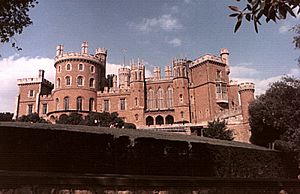
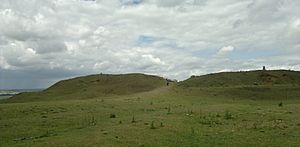
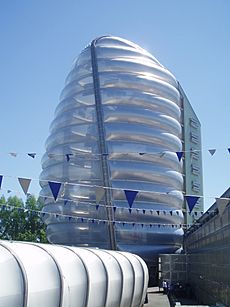
- Abbey Pumping Station
- Ashby Castle


- The Battlefield Line

- Belgrave Hall & Gardens
- Belvoir Castle

- Bosworth Battlefield
- Bradgate Park & Swithland Wood
- Bruntingthorpe Aerodrome
- Burrough Hill Iron Age Hill Fort
- Castle Park

- Charnwood Museum
- Donington le Heath Manor House Museum
- Donington Park
- East Midlands Airport
- Foxton Locks
- Great Central Railway (heritage railway)

- Harborough Museum
- Kirby Muxloe Castle

- Leicester Cathedral

- Mallory Park
- Melton Carnegie Museum
- Moira Furnace
- National Space Centre
- The National Forest and Conkers
- Snibston Discovery Museum
- Stanford Hall

- Stoney Cove the National Diving Centre
- Stapleford Miniature Railway

- Twycross Zoo

- University of Leicester Botanic Garden
- Watermead Country Park

- Wigston Framework Knitters Museum
Economy and Industries
Engineering and Manufacturing
Engineering has always been important in Leicestershire. John Taylor Bellfounders in Loughborough have been making bells since the 14th century. They even cast "Great Paul," the largest bell in Britain, for St Paul's Cathedral.
Today, engineering companies make many different things. These include sports cars by Noble Automotive and Ultima Sports. Triumph Motorcycles are made in Hinckley. Other companies produce machine tools, plant machinery, and industrial components.
The county also has strong links with universities for engineering studies. Research centres like the Systems Engineering Innovation Centre are based at Loughborough University.
Farming and Food
Leicestershire has a long history of farming, especially with livestock. Robert Bakewell, a famous farmer from the 1700s, developed new ways to breed animals. His Leicester Longwool sheep were very popular.
The county is famous for its food. Stilton and Red Leicester cheeses are well-known. The pork pie is another famous food from the area. Local producers make flour, meat products, and non-alcoholic drinks.
Many food companies have factories in Leicestershire. Pukka Pies are made in Syston. Walkers crisps are produced in Beaumont Leys. There are also many Indian food manufacturers in Leicester.
Clothing and Textiles
Leicester and Leicestershire have a history of making knitwear, hosiery, and footwear. The sheep on the county's coat of arms shows this heritage. Today, companies focus on high-quality clothing and special textiles.
Pantherella makes socks that are sold in famous stores worldwide. Other companies make knitwear and technical textiles. The design centres for major clothing brands like Next and George Clothing are also in the county.
Healthcare and Services
University Hospitals Leicester NHS Trust runs three hospitals in the area. They employ many people to provide healthcare. Several important health and safety organizations also have their main offices in Leicestershire.
The county has good transport links. East Midlands Airport is a major freight airport. The M1 is another important transport route. Many large companies have warehouses here for distribution.
Leicester's Cultural Quarter is an area being redeveloped. It includes new places for performing arts and creative businesses.
Education in Leicestershire
Schools and Colleges
Leicestershire has comprehensive secondary schools. Some areas use a system with middle schools (ages 10–14) and upper schools (ages 14–18). Many schools have a large number of students.
For A-levels, De Lisle College in Loughborough is a top-performing state school. There are also independent (private) schools like Loughborough Grammar School and Loughborough High School.
Further and Higher Education
There are four general further education colleges in Leicestershire. These include Leicester College and Loughborough College. They offer various courses and apprenticeships.
Leicestershire is home to three universities. These are the University of Leicester, Loughborough University, and De Montfort University.
Sporting Organizations
Many UK sporting bodies have their main offices in Leicestershire. These include Volleyball England, the British Judo Association, and the British Triathlon Federation. The Youth Sport Trust is also based here.
Images for kids
See also
 In Spanish: Leicestershire para niños
In Spanish: Leicestershire para niños



